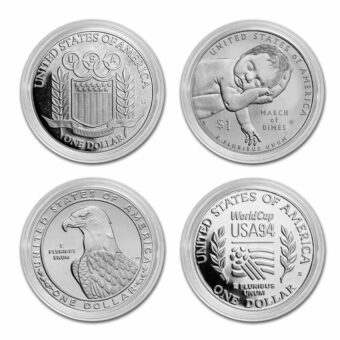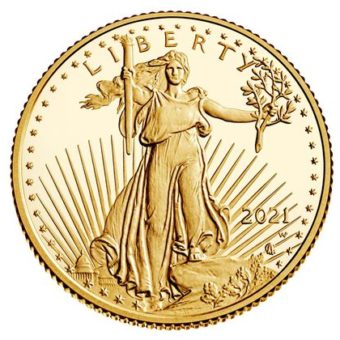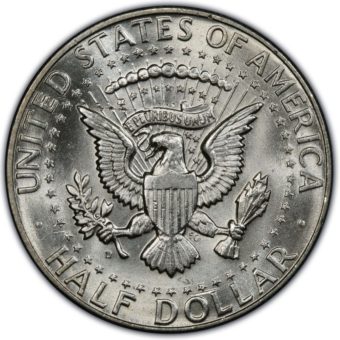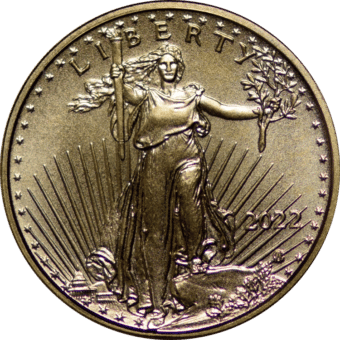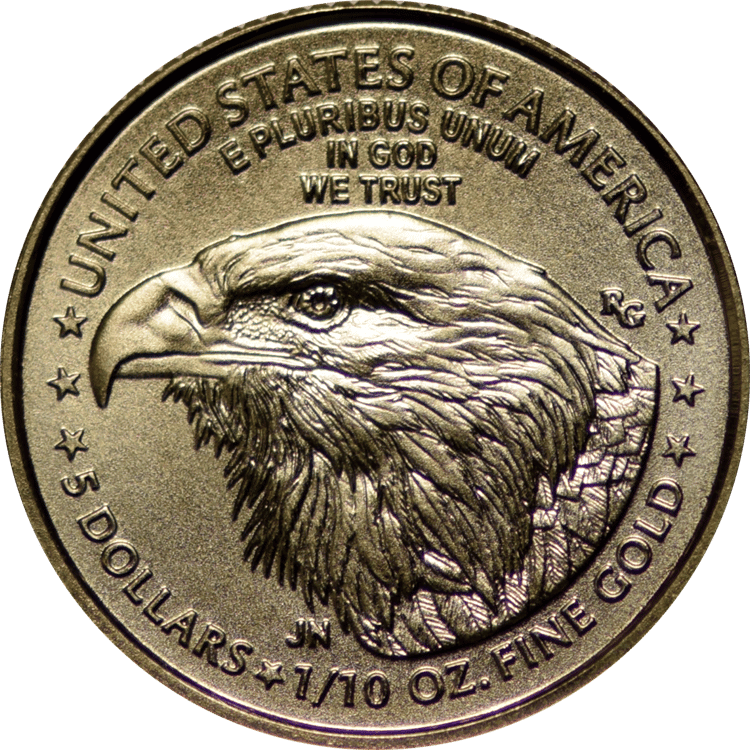In a moment where monetary policy shifts and precious metals react acutely, staying informed is vital. This week’s developments underscore how interconnected rate decisions, currency strength, and global activity influence gold and silver—an essential dynamic for anyone considering physical precious metals as part of a broader wealth‑preservation strategy.
Fed Cuts, Metals Crack: Gold Below $4 K as Powell Turns Hawkish
Gold and silver embarked on a volatile journey this week as market participants balanced expectations of the Federal Reserve’s second rate reduction with the surge in global equity markets and hopes for a U.S.–China trade resolution. After sliding to three‑week lows, both metals made a midweek rebound, only to retreat again when Jerome Powell adopted a more hawkish tone—highlighting the ongoing tension between easing expectations and inflation concerns.
Monday – 10.27.25: Gold dropped $141.40 to $3,996.10 and silver fell $2.276 to $46.31, reaching three‑week lows amid optimism about a major U.S.–China trade deal that boosted equities and triggered long liquidation and technical selling. Silver lease rates fell sharply—from 34.9% on Oct. 9 to 5.6%—reflecting a return of liquidity and prompting weekly inventory reports from the London Bullion Market Association (LBMA) that prioritized silver.
Tuesday – 10.28.25: Gold declined $39.20 to $3,980.50, while silver rebounded $0.471 to $47.245 midday. Although gold regained about half its previous overnight losses, the recent downturn inflicted technical damage that suggests near‑term resistance. With the Fed meeting upcoming and data flow affected by the government shutdown, risk‑on flows and elevated equity levels (S&P 500 near 6,875) continued to weigh on safe‑haven metals.
Wednesday – 10.29.25: Gold rose $47.70 to $4,030.50 and silver increased $0.866 to $48.20 midday, benefiting from a corrective rebound following earlier heavy selling and the widely expected 25 bps cut. Market participants focused on the FOMC statement and Powell’s press conference for guidance, as a softer labor market supports easing while sticky inflation complicates the outlook. Swaps were pricing in today’s cut and roughly three more by July, though Powell’s tone could shift that trajectory.
Thursday – 10.30.25: Gold slipped $16.50 to $3,984.70 and silver edged down $0.028 to $47.89 early Thursday following the Fed’s 25 bps rate cut. Powell’s remarks—saying a December follow‑up cut is “far from” guaranteed—pushed yields higher, dampened expectations of further cuts, and underscored monetary‑policy divergence in a data‑constrained environment.
Friday – 10.31.25: Gold and silver held near steady in quiet end‑of‑month trading, with December gold at $4,021.40 (+$5) and silver at $48.595 (‑$0.026). Global markets were mixed to firmer, U.S. indexes pointed higher, and in Asia, Chinese President Xi Jinping called for supply‑chain resilience after meeting Donald Trump. Meanwhile, weak Chinese manufacturing data—the longest slump in over nine years—added pressure for fresh stimulus, and the U.S. government shutdown persisted.
Fed Lowers Rates Again as Labor Market Shows Signs of Strain
The Big Picture:
The Federal Reserve has lowered its target for the federal funds rate by 25 basis points, bringing it to a range of 3.75% to 4%. This marks the second cut of 2025, as signs of labor market softness continue to emerge—even with inflation still above target. The move highlights the Fed’s effort to support employment while trying not to lose ground on controlling prices.
Driving the News:
The Federal Open Market Committee (FOMC) voted 10–2 in favor of the cut. While Governor Stephen Miran pushed for a deeper 50-basis-point move, Kansas City Fed President Jeffrey Schmid voted against any change.
Chair Powell referred to both this cut and September’s as “insurance” moves, designed to position monetary policy closer to neutral. The economic picture remains mixed: goods inflation has risen, largely due to tariffs, while service-sector inflation continues to ease. Adjusting for tariffs, core personal consumption expenditures (PCE) may now be running closer to 2.3% to 2.4%.
Labor-market data, still incomplete due to the government shutdown, shows a trend of slowing job creation and a modest rise in unemployment to 4.3%. Powell noted that while layoffs remain low, fewer people are finding new jobs.
Following the announcement, market expectations for another rate cut in December dropped significantly—from over 90% to just above 50%.
By the Numbers:
- 25 bps: October rate cut
- 3.75%–4%: New federal funds rate range
- 4.3%: Current U.S. unemployment rate
- 54.7%: Odds of another cut in December (down from 90.5% pre-meeting)
Why It Matters:
The Fed’s recent actions show increased concern about a potential cooling in the job market. Cutting rates twice in short order suggests a shift in focus toward economic stabilization. Still, with inflation proving stubborn, the central bank risks being seen as too accommodative if price pressures don’t ease further.
What to Watch:
Upcoming labor-market data—once available—will be key in confirming or challenging Powell’s description of a “soft but stable” jobs picture. Inflation expectations, especially if tariffs continue or expand, could also influence future policy. Markets are closely watching the December meeting, where another rate move is now less certain. Employment trends and wage data in the weeks ahead will help clarify whether the Fed will pause or consider a third cut.
The Bottom Line:
The Fed is adjusting gradually to signs of economic slowdown, while remaining alert to inflation risks. These “insurance” rate cuts are meant to provide a buffer against further weakness—but the coming months will reveal whether that buffer is enough.
Gold Outlook Strengthens as LBMA Projects $5,000 Within a Year
The Big Picture:
Market sentiment around gold has taken a notable turn. After years of underestimating its resilience, participants are now aligning with a much more bullish outlook—even following gold’s recent dip below the $4,000 mark. The latest survey from the London Bullion Market Association (LBMA) projects gold could reach $4,980.30 within the next year. So far in 2025, gold has delivered over a 50% gain—its strongest annual performance since 1979.
Driving the News:
The LBMA survey shows growing confidence in gold’s upward potential. The projected 12-month target of nearly $5,000 per ounce represents a 25% rise from current levels and marks a significant jump from last year’s forecasts.
Momentum isn’t limited to gold alone. Platinum has led all metals this year with a 93% rise, while silver has climbed 61%. UBS reports that the number of people holding gold has tripled in 2025, with total holdings doubling—signs of a broad and steady build in demand.
Survey participants remain optimistic about the future as well. About 40% expect gold to be the top-performing metal in 2026, with 30% choosing platinum and 21% favoring silver.
By the Numbers:
- $4,980.30 – 12-month gold target (+25%)
- +50% – Gold’s performance so far in 2025, best since 1979
- $59.10 – 12-month silver target (+25%)
- $1,815.50 – 12-month platinum target (+14%)
Why It Matters:
This shift in sentiment signals more than a passing trend. Gold’s rise appears driven by long-term fundamentals—strong demand, persistent inflation concerns, and increased interest in tangible assets. A continued move toward $5,000 would reinforce gold’s role as a store of value. However, with such rapid gains, the potential for price volatility should not be overlooked.
What to Watch:
A few key questions will shape the direction of gold from here. Can it break and hold above the $4,360 resistance level? Will platinum maintain its performance lead into next year? Institutional buying trends—especially in ETFs—could either validate or challenge current bullish expectations. Broader economic forces like interest-rate shifts and inflation surprises may ultimately determine whether gold’s next stop is a ceiling or a new support level.
The Bottom Line:
The LBMA’s updated forecast reflects a clear shift toward gold as a leading asset in uncertain times. After such a historic run, the next phase may test the durability of that enthusiasm. For those focusing on physical precious metals, the underlying demand story remains strong—and the case for gold as a core holding continues to build.
Understanding ISO 20022: New Standards, New Questions for Data Privacy
The Big Picture:
ISO 20022, the new global standard for financial messaging, is now an active part of U.S. payment systems. While this upgrade enhances processing speed and automation, it also changes how much personal information is included in routine transactions. As payment systems like Fedwire, CHIPS, and FedNow adopt the format, new privacy and data-retention questions are emerging.
Driving the News:
The shift began in stages. The Fedwire Funds Service adopted ISO 20022 in July 2025, following CHIPS in April 2024 and FedNow at launch. The final step comes on November 22, 2025, when ISO 20022 becomes fully active across all major U.S. financial networks.
The new format includes structured, machine-readable data fields—allowing the transmission of full names, addresses, dates of birth, and other identifying details. This capability improves transparency and processing but also raises concerns about privacy and data security, especially for cross-border transactions.
Industry leaders have flagged the risk of data exposure, while U.S. regulators emphasize that ISO 20022 doesn’t introduce new surveillance laws—it simply standardizes and expands the type of data already permitted under existing compliance frameworks.
By the Numbers:
- 3 major U.S. payment systems are now ISO 20022-enabled
- +50% estimated increase in personal data per transaction
- November 22, 2025: Full ISO 20022 activation in the U.S.
- 24/7: FedNow’s real-time payments increase data volume and velocity
- November 2025: Structured addresses required for global CBPR+ payments
Why It Matters:
The financial system is becoming more data-intensive. While these updates improve efficiency, they also mean more personal data is included in every transaction by default. For those who value financial privacy, this evolution highlights the need to understand how data is handled, stored, and shared across systems.
What to Watch:
It’s worth paying attention to how banks and payment processors choose to populate optional fields such as birthdates or structured addresses. Cross-border transactions could bring additional exposure due to differing international privacy laws. Transparency around how long financial institutions retain this data, who can access it, and how it is protected will be critical going forward.
The Bottom Line:
ISO 20022 offers real benefits for speed and standardization, but it also increases the flow and detail of personal information within financial networks. As this transition becomes the new norm, those focused on protecting their financial autonomy may find value in balancing digital convenience with tangible assets that remain outside of these expanding data channels.
Economic Calendar: November 3–7, 2025
The coming week is filled with data points and speeches that could impact precious metals markets, especially in light of recent Fed actions and policy divisions.
Key Events to Watch:
- Monday, Nov. 3:
- U.S. Manufacturing data (S&P and ISM) will give insights into economic momentum.
- Fed Governor Lisa Cook speaks in the afternoon, which could influence market tone.
- Tuesday, Nov. 4:
- September’s JOLTS job openings report will shed light on labor market tightness.
- Wednesday, Nov. 5:
- ADP private payrolls, S&P Services PMI, and ISM Services Index will all help shape expectations around growth and rate policy.
- Thursday, Nov. 6:
- Weekly jobless claims arrive in the morning, followed by a series of Fed speakers throughout the day.
- Friday, Nov. 7:
- The October Employment Report (Jobs Report) is the most anticipated print of the week, followed by remarks from Dallas Fed President Lorie Logan and the University of Michigan’s preliminary consumer sentiment index.
Impact on Precious Metals Markets
These upcoming releases and remarks may significantly influence sentiment around gold and silver:
- Strong economic data (PMIs, payrolls, consumer sentiment) may reinforce higher-for-longer rate expectations, putting upward pressure on real yields and the dollar—generally bearish for metals in the short term.
- Weaker data (job losses, lower manufacturing or services activity) may revive easing hopes and reduce yield pressure—supportive for safe-haven demand.
- Hawkish Fed commentary (focused on inflation or market tightening) typically pressures gold and silver prices.
- Dovish commentary (highlighting risks to growth or financial stability) can support precious metals by signaling potential policy accommodation.
Call to Action
Understanding the factors that influence precious metals is essential in today’s complex landscape. Visit our website to explore educational resources and timely commentary on physical gold and silver markets—designed to help you make confident, well-informed decisions rooted in long-term financial resilience.






